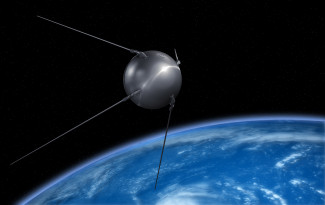
Johns Hopkins UniversityEst. 1876
America’s First Research University
Freedom's Laboratory: The Cold War Struggle for the Soul of Science

I never intended to write a history of psychological warfare.
The project that ultimately became Freedom’s Laboratory started out as a fairly standard investigation into the life and work of Johns Hopkins geneticist H. Bentley Glass. Glass originally attracted my attention because his reputation as an outspoken champion of scientific freedom simply did not line up with historians’ existing narrative of science and the Cold War. In a context in which American institutions seemed to be more interested in enforcing political consensus that advancing justice, Glass stood out as a low-key hero who defended his colleagues against McCarthyism, spoke out against the dangers of fallout, and participated in civil rights campaigns.
And yet—and this is the fact I found surprising—his career flourished. Glass’s research received generous funding from the Atomic Energy Commission, even as he roundly criticized the agency’s position on fallout and the FBI launched a series of investigations into his political views. In 1959, he was inducted into the National Academy of Sciences. Starting in 1954, he assumed the presidency of one professional group after another, culminating in the presidency of the American Association for the Advancement of Science in 1969. His appointment as academic vice president of SUNY–Stony Brook in 1965 recognized both his administrative prowess and his breadth of mind.
U.S. scientists weren’t supposed to get away with this sort of thing in the Cold War. How, I wondered, had Glass managed to navigate the minefield of anti-Communism so successfully? How did those around him come to understand, or at least tolerate, his insistence on civil liberties during an age of suspicion?
Over time, I came to understand that Glass’s copious FBI file was a distraction from his more important role as an international man of science who represented U.S. scientific values on a global stage. Glass, a civil libertarian through and through, had deep ties to U.S. government agencies, especially those involved with science diplomacy. Glass consulted for the State Department in Occupied Germany and had close ties to people who worked with the intelligence services throughout his career.

The interesting question wasn’t how Glass had flourished while criticizing the government. The question was why so many historians of science, myself included, had failed to see that, in 1955, support of scientific freedom was not oppositional at all. Notwithstanding the FBI’s suspicion of anyone and everything associated with civil rights, other branches of the US government embraced advocates of scientific freedom as mouthpieces for American values. The State Department found Glass’s commitment to scientific objectivity politically useful, as did the CIA and the US Information Agency.
Once seen, the links between Cold War propaganda and scientific freedom can’t be unseen. In 1954, a scientist who spoke out against loyalty oaths was both taking a brave stand against political witch hunts and demonstrating to an international audience that (some) scientists in the United States had the freedom to criticize their own government. In the 1960s, US scientists who participated in international exchange programs with the Soviet Union were both building genuine friendships with their Soviet counterparts and collecting scientific intelligence.
Freedom’s Laboratory grew out of my attempt to understand how I had so deeply misunderstood not only Bentley Glass, but also so many other scientists of his generation. The sheer effectiveness of Cold War-era messages about the nature of science has limited both scientists’ and historians’ ability to understand scientists’ role in Cold War propaganda. Instead of writing a biography of a single geneticist, I produced an account of the myriad ways that ideas about science and scientists took on a central role in the United States’ ideological war against global Communism.
Nearly thirty years after the collapse of the Berlin Wall, it’s well past time to come to terms with the legacy of the Cold War. It’s my hope that unearthing the tangled roots of the relationship between science, freedom, and democracy will help all of us—scientists, historians, politicians, journalists, members of the general public—develop more meaningful and inclusive visions of science’s role in democracy.
Audra J. Wolfe is a Philadelphia-based writer, editor, and historian. The author of Freedom's Laboratory: The Cold War Struggle for the Soul of Science and Competing with the Soviets: Science, Technology, and the State in Cold War America, her work has appeared in the Washington Post, The Atlantic, and the podcast American History Tellers.


